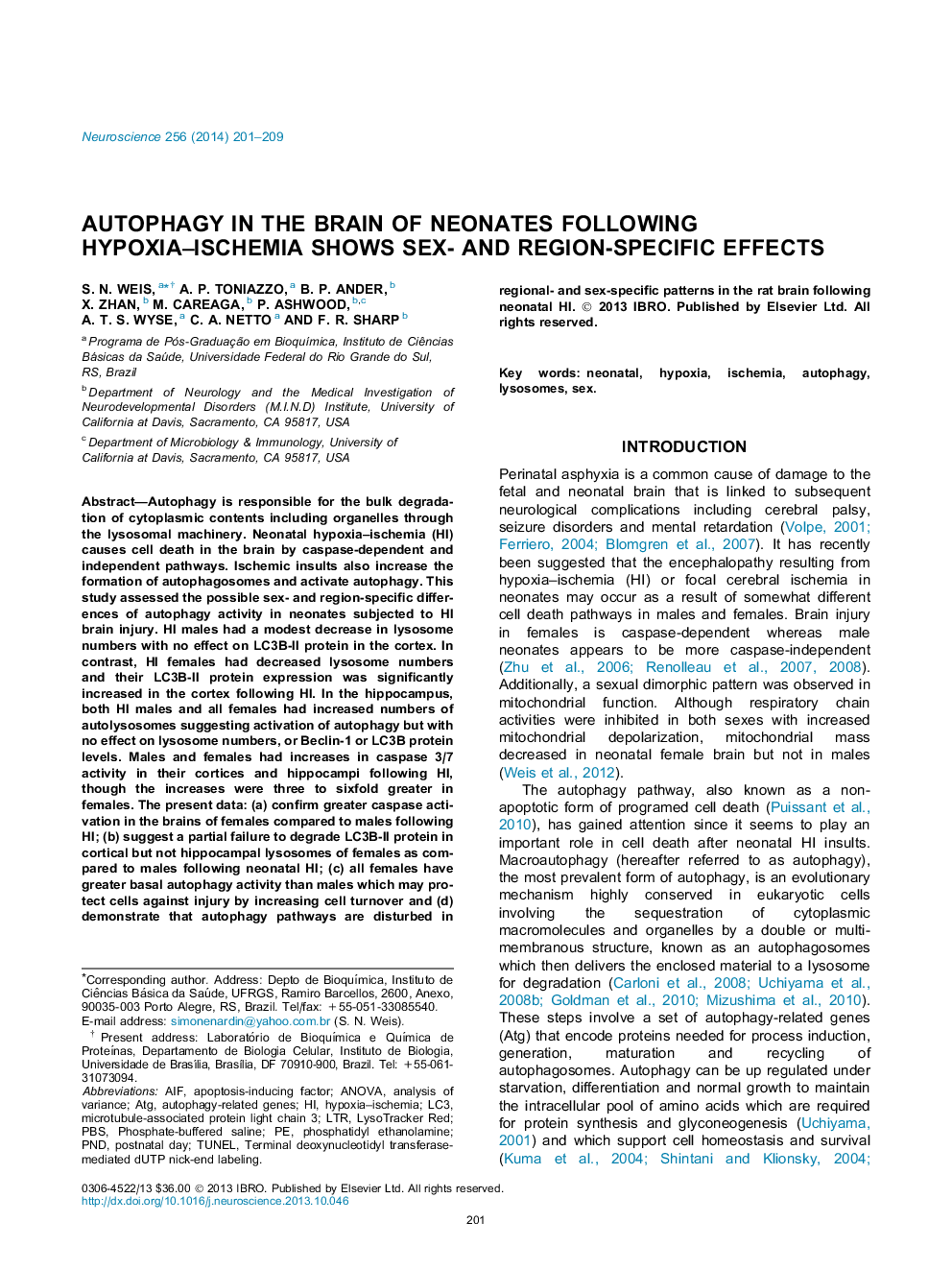| Article ID | Journal | Published Year | Pages | File Type |
|---|---|---|---|---|
| 6274181 | Neuroscience | 2014 | 9 Pages |
Abstract
Autophagy is responsible for the bulk degradation of cytoplasmic contents including organelles through the lysosomal machinery. Neonatal hypoxia-ischemia (HI) causes cell death in the brain by caspase-dependent and independent pathways. Ischemic insults also increase the formation of autophagosomes and activate autophagy. This study assessed the possible sex- and region-specific differences of autophagy activity in neonates subjected to HI brain injury. HI males had a modest decrease in lysosome numbers with no effect on LC3B-II protein in the cortex. In contrast, HI females had decreased lysosome numbers and their LC3B-II protein expression was significantly increased in the cortex following HI. In the hippocampus, both HI males and all females had increased numbers of autolysosomes suggesting activation of autophagy but with no effect on lysosome numbers, or Beclin-1 or LC3B protein levels. Males and females had increases in caspase 3/7 activity in their cortices and hippocampi following HI, though the increases were three to sixfold greater in females. The present data: (a) confirm greater caspase activation in the brains of females compared to males following HI; (b) suggest a partial failure to degrade LC3B-II protein in cortical but not hippocampal lysosomes of females as compared to males following neonatal HI; (c) all females have greater basal autophagy activity than males which may protect cells against injury by increasing cell turnover and (d) demonstrate that autophagy pathways are disturbed in regional- and sex-specific patterns in the rat brain following neonatal HI.
Keywords
PBSLysoTracker RedPNDLTRLC3ATGAIFAutophagyIschemiaanalysis of varianceANOVATUNELSexpostnatal daymicrotubule-associated protein light chain 3apoptosis-inducing factorphosphatidyl ethanolamineLysosomesterminal deoxynucleotidyl transferase-mediated dUTP nick-end labelingPhosphate-buffered salineneonatalHypoxiahypoxia–ischemiaautophagy-related genes
Related Topics
Life Sciences
Neuroscience
Neuroscience (General)
Authors
S.N. Weis, A.P. Toniazzo, B.P. Ander, X. Zhan, M. Careaga, P. Ashwood, A.T.S. Wyse, C.A. Netto, F.R. Sharp,
